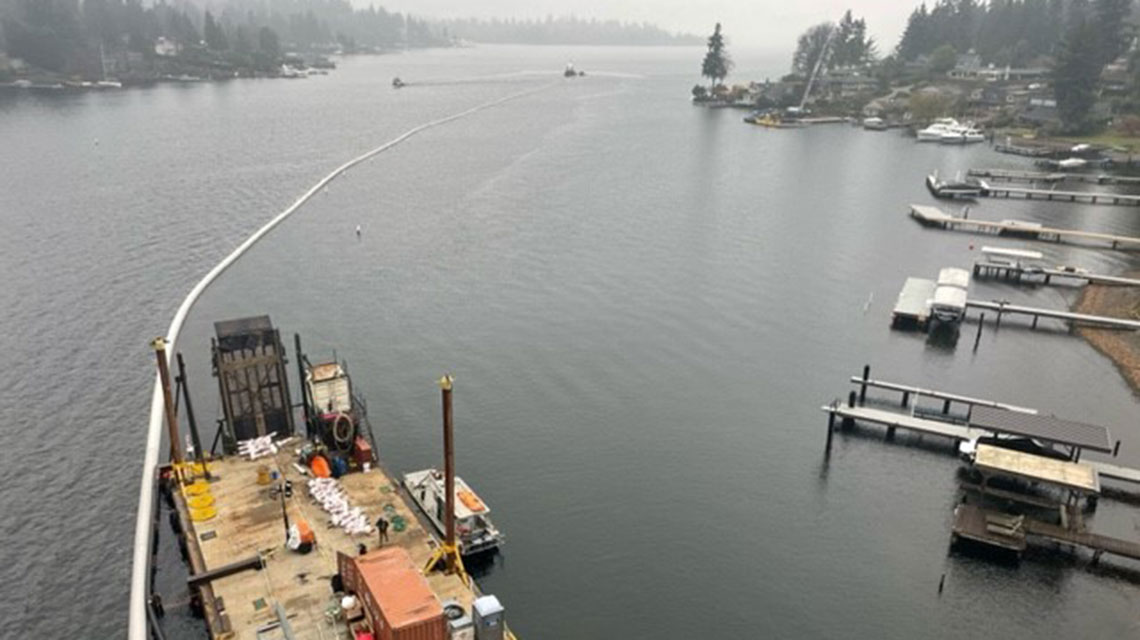
The King County Wastewater Treatment Division (WTD) in Washington manages a system that serves seventeen cities and 1.7 million people, spanning more than three hundred and fifty miles of pipe. The pipeline that runs across Mercer Island to the Sweyolocken Pump Station near Mercer Slough in south Bellevue, became overwhelmed by sewage and stormwater flows as the population continued to grow and at the same time was beginning to deteriorate due to aging.
Seven years of planning and four years of construction will address the environmental concerns with a complex project that will include 19 different stages in eight designated areas. The most challenging aspect of the project, was a new pipeline that could relieve some of the pressures on the existing Enatai Interceptor pipe, which needed rehabilitation of its own.
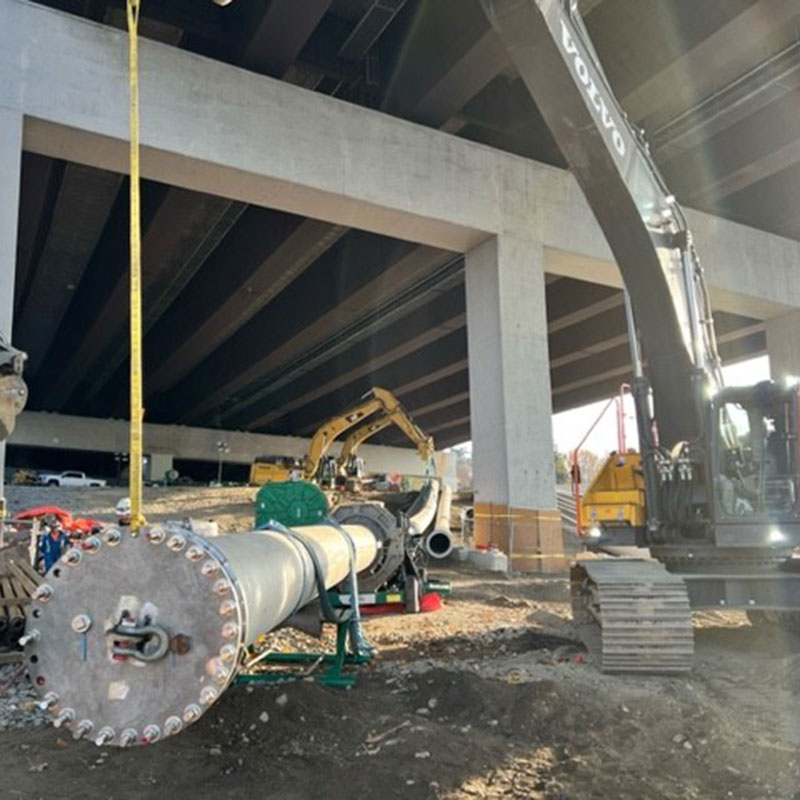
An Overwhelmed Wastewater System
There were many facets to the solution process of overcoming an overwhelmed wastewater system:
1. Because of the intrusive nature of the construction and installation, there was a need for a long-term solution, avoiding disruptive repairs, refurbishment or re-installation.
2. The Pacific Northwest is an area prone to seismic activity, and as a result there was concern about the effects on a piping system in the form of soil liquefaction.
3. The footprint for construction of the piping system was minimal. The only option that offered the necessary amount of space for the 3,000-foot line was floating it in Lake Washington.
4. The timeline to construct and install the pipeline was tight in an attempt to eliminate disturbing the community and eco-system.
5. The new line needed to link the existing pipe to the pump station via a new route that did not directly impact residential housing and recreational beaches and parklands.
6. King County desired an HDPE pipe that was gray, which is common, but not in the diameter that was requested.
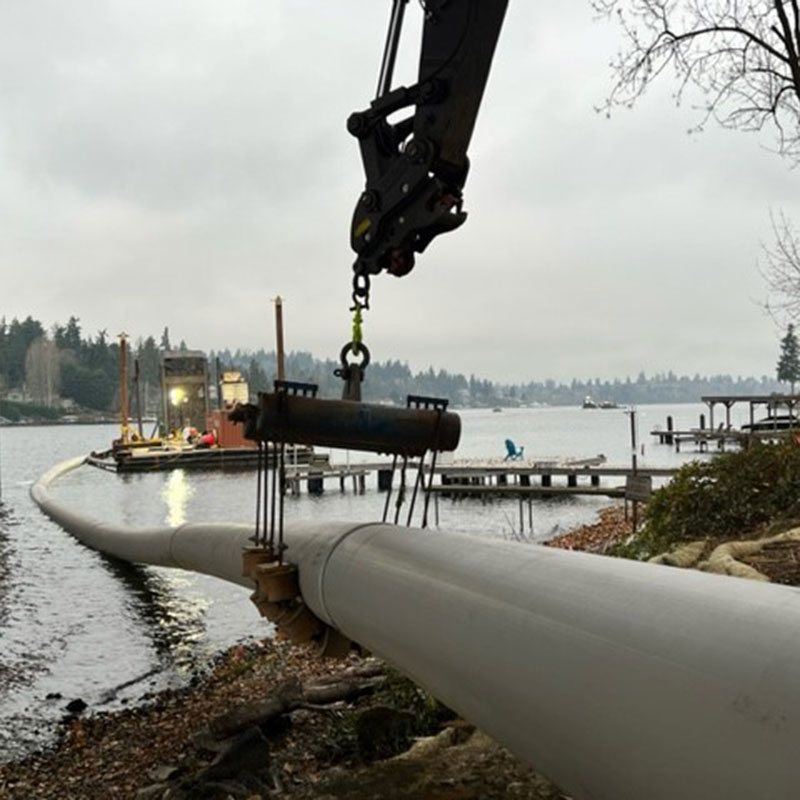
This is where ISCO, Drew Mueller, Mike James, the project management team, business management team and many others, stepped in with an HDPE solution in hand.
While other factors pointed to HDPE as the best solution, it was apparent that the need for a long-term solution led to its role as the only solution.
In addition to its flexibility, high flow velocity and leak-free nature, HPDE offered the easiest and least disruptive installation. This installation in Washington will ensure that repairs or re-installation will not have to be considered for at least 100 years.
Its durability and resistance to shifting soils was the only option that could prevent catastrophic failure in the event of seismic activity.
Needing to construct the 3,000-foot line in its entirety before it is pulled through to the pump station, ruled out any other piping solution as they lacked the flexibility and ability to float.
Multiple 180-foot stringers of HDPE were fused in September and the internal bead was removed with an R & L Manufacturing's Bead Trimmer, at which point they were brought to the Enatai Beach site. It was there, in December, that the 180-foot segments were fused together and floated on to Lake Washington to create the 3,000-foot line.
The window that Lake Washington could be occupied by the fusing and floating of the gray HDPE and subsequent installation under the hillside was tight. The entire process was completed under deadline in about 12 days.
Permits obtained from King County allowed only 48 hours to install the line under the hillside to extend to the pump station. Three barges were enlisted in assisting with the floating pipeline. Any aspect of the process that extended beyond the 48 hours would have a dire negative financial impact on the project.
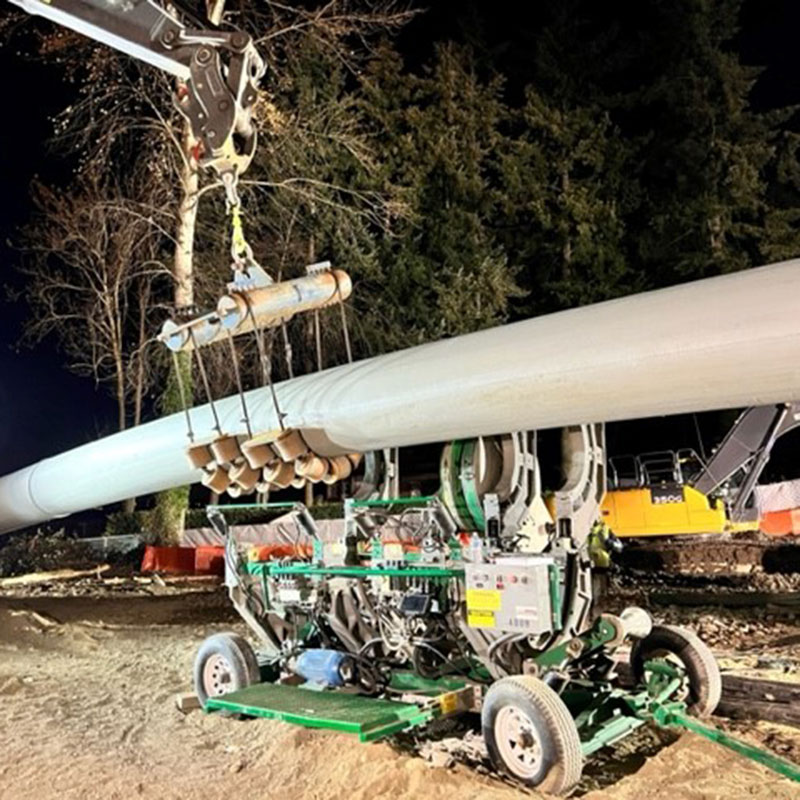
Horizontal Directional Drilling (HDD) to Avoid Community Disruption
The fusion of the 180-foot lengths were performed by ISCO fusion technicians in the field with a pair of McElroy fusion machines; the McElroy MEGAMC® 1648Tracstar and a McElroy T900. The techs and fusion machines worked around the clock during the 48-hour period, to limit the amount of time that boating, fishing and other recreation or transport would be adversely impacted on Lake Washington.
In order to avoid further disrupting local housing and recreation, the project utilized horizontal directional drilling (HDD), a path only HDPE could take. HDD is a technology that bores a path deep underground that the flexible pipe is then fed through. This allows a direct line from point A to point B - in this case from the connection to the existing line at Enatai Beach Park to King County's Sweyolocken pump station.
This all but avoids the environmental and residential impact that other trenched installation would entail, and the nature of the direct connection saves time and money by requiring a shorter distance, and therefore less pipe and fewer welds.
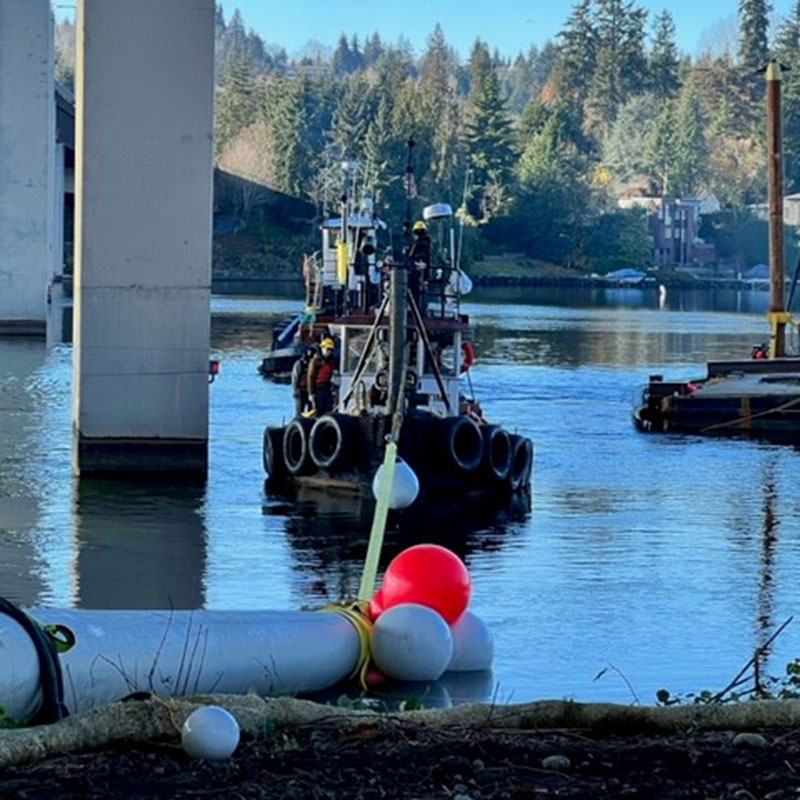
A Commitment to Clean Water and Healthy Habitat
Finally, the unique color of the 32” DR 9 force main limited the number of manufacturers that could produce the product. ISCO's relationships with manufacturing partners in the industry allowed them to procure the pipe needed in a timely manner to complete the project.
While the rehabilitation of the aging Enatai Interceptor is performed, its flows will be diverted to the new Enatai Siphon that ISCO installed.
Eventually ISCO will tie-in fabricated elbows with smaller diameter HDPE linking the Sweyolocken Pump Station in Bellevue as the completion of the project nears.
With the number of unique requirements facing the project, ISCO was able to not only meet the needs of King County Wastewater Treatment Division (WTD) in Washington, but support their commitment to clean water and healthy habitat.
SUBSCRIBE TO ISCO UPDATES
ISCO Updates
[gravityform id="21" title="true"]
